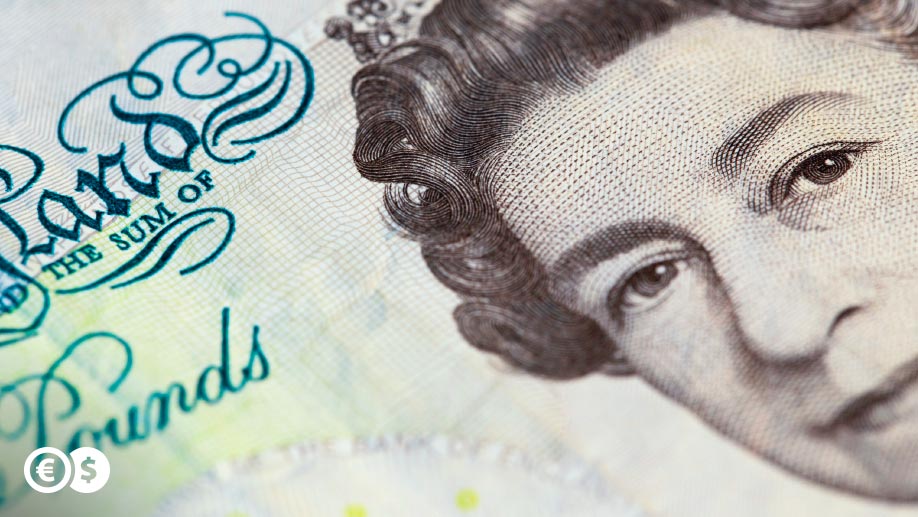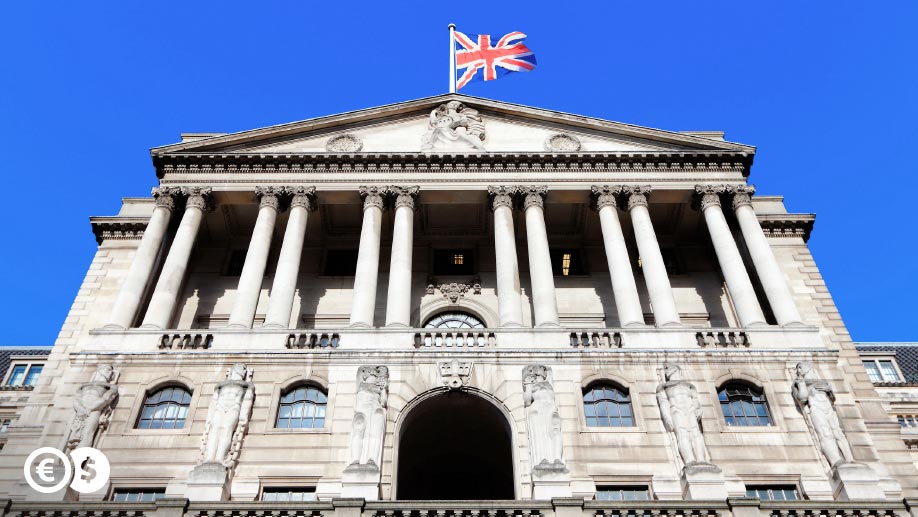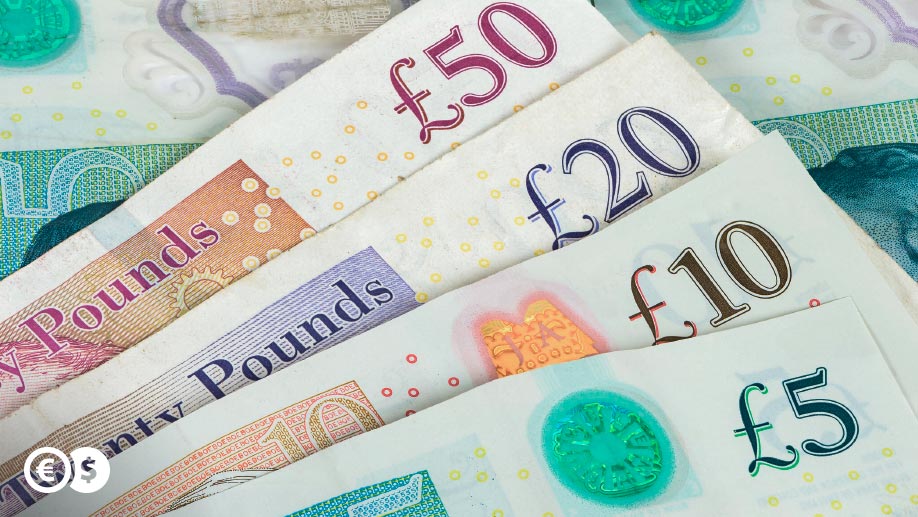The pound sterling has a rich history and is the oldest currency in the world. As a means of payment, initially as a penny, it has been functioning since the end of the 8th century.
Table of contents
- The beginnings of the British pound
- The Bank of England and the counterfeiting issue
- Relation against other currencies and further devaluations
- Where did the name of the pound sterling come from?
- Pound sterling — banknotes and denominations
- The guardian of the British pound
- Where can I pay in British pounds?
To learn the origins of the name of the British currency, one should go to the Latin language first.
The beginnings of the British pound
The origins of the British pound as a means of payment can be traced back to the end of the 8th century AD. At the time, the Anglo-Saxon king Offa introduced a monetary unit called a penny. One coin weighed 1/240 pounds and was made of silver. Although nobody called it sterling then, it was the one that started the British currency as we know it today.
The situation changed in 1158. Then, King Henry II officially introduced the pound sterling and made it convertible for silver. This principle was preserved until 1816.
The first coins with a nominal value of one pound appeared as late as 1489. Interestingly, they were made of gold. It resulted from the fact that one pound of silver weighed 373 grams. The minting coins that weighed almost half a kilo was pointless, so the gold ore was used instead.
In those days, one pound sterling was divided into 240 pens. In 1487, shillings were also introduced. There were 20 shillings per pound. One shilling was equivalent to 12 pence.

The Bank of England and the counterfeiting issue
In 1694, the Bank of England was established to monitor the British currency. It was the second central bank in the world, after the Swedish one. Shortly afterwards, the first banknotes were printed and exchanged for gold. Primitive technology, however, made them extremely easy to counterfeit and coins were considered a safe means of payment.
Gold slowly began to displace silver and became the backbone of the British monetary system. In 1663, guineas, i.e. new gold pounds, were introduced. Officially, the exchangeability of sterling for silver was maintained until 1816.
Then, the English currency was associated with gold. The silver coins were not stopped from being issued, but their worth did not resemble the value of the gold used to make them.
In the 17th century, the problem of counterfeiting also affected coins. Finally, it was handled by Isaac Newton, who became the Master of the Royal Mint. He carried out his own investigation and collected evidence that allowed him to charge William Chaloner, who had been proclaimed the greatest forger in England.
The pound's conversion to gold was running until 1914 and reintroduced twelve years later. At that time, though, there were no gold coins in circulation, but banknotes that could be exchanged for gold bars.
The system did not endure the crisis of the 1930s, and it was eventually stopped — the pound's value depreciated by about 20% during this period.
For many years, the sterling was considered easy to counterfeit. During World War II, the banknotes were secured in about 150 different ways, but this did not prevent the Third Reich from mass counterfeiting. It is estimated that the Reichsbank printing press produced around 32 billion false banknotes, and in 1945 the fake ones could account for up to 12% of all pounds in circulation.
The Third Reich tried to weaken the British economy in this way, which was, to some extent, successful. The pound sterling lost as much as 75% of its value in that period.

Relation against other currencies and further devaluations
After the war, there was an effort to find a way to stabilise the pound. Convertibility to gold was no longer valid, so the decision to link it with other currencies was made. The first was the US dollar, but the effects of these actions were not adequate.
Already in 1949, the pound was devalued by another 30%. The next one took place in 1967, this time by 14%, but the culmination point came in February 1985 when the pound reached the lowest exchange rate in history. One could only get 1.05 USD for one pound.
The United Kingdom had to deal with a weak currency. In 1988 the government of Margaret Thatcher decided to link the pound with the German mark. Two years later, it was included in the ERM (European Exchange Rate Mechanism), which was designed to reduce exchange rate volatility and stabilise European currencies.
On September 16, 1992, Black Wednesday happened. A group of speculators led by George Soros carried out an attack on the pound, and it engaged as much as 10 billion USD. The Bank of England did not have enough dollars to protect the pound, which caused the British currency to lose 25% in just a few days. George Soros, on the other hand, made more than a billion USD.
As a result of these events, the Bank of England did not include the pound in the ERM II system, which is one of the criteria for the introduction of the common currency, the euro. The British government also negotiated to remain outside the eurozone.

Where did the name of the pound sterling come from?
Although the currency of Great Britain is often referred to as the British pound, in fact, it is a colloquial expression. The official name is pound sterling. Its abbreviation is GBP, but £ is often used as a symbol. In the past, the symbol was just written as a capital letter L with a horizontal line to highlight the fact that it is an abbreviation.
This symbol comes from the Latin word libra, which means weight and a unit of mass. Therefore, the name of the currency is the pound, as well as the unit of mass used in Great Britain.
However, to distinguish the currency from the mass unit, a second term, sterling, has been added to the name. The etymology of this word probably derives from the expression "money having the quality of the sterling," which in the old days referred to the quality of silver.

Pound sterling — banknotes and denominations
Most of the time, the pound sterling was divided into 20 shillings and those into another 12 pence. Therefore, there were 240 pence per pound, which caused a number of disputes and discussions. The question was how to write these values down after the decimal point.
This issue was resolved on February 15, 1971. It was established that there would be 100 pence per pound. This division is still in force today.
Today, 1, 2, 5, 10, 20 and 50 pence coins, as well as 1- and 2-pound coins are used. The banknotes used are 5, 10, 20 and 50 pounds. Scotland and Northern Ireland also use 1- and 100-pound banknotes.
An image of Queen Elizabeth II is placed on the observe of all of them. On the reverse side, there are figures representing people who have earned their place in the history of Great Britain. Winston Churchill was placed on a 5-pound banknote (previously, the banknote presented a social activist Elizabeth Fry).
10 pounds shows an image of the writer Jane Austen (until March 1, 2018, it was Charles Darwin). On the 20-pound banknote, we can see a Scottish philosopher Adam Smith, while 50 pounds are covered with portraits of inventors — Matthew Boulton and James Watt.
Most of the current banknotes are issued by the Bank of England, although some local banks in Scotland and Northern Ireland print their own money. Nevertheless, they do not constitute legal means of payment. They are only a kind of bill of sale. Therefore, they may not be accepted in England and Wales and in a bureau de change outside the United Kingdom.
All overseas territories of Great Britain — St. Helena's Island, Falkland Islands, Isle of Man, Channel Islands (Guernsey and Jersey) and Gibraltar — also have their pounds. However, they are related to pound sterling in a relationship of 1:1 and used simultaneously with British pounds.

The guardian of the British pound
The pound is guarded by the Bank of England. It performs functions typical for most central banks. Interestingly, its role also includes advising the British government on financial policy issues.
The Bank of England is responsible for the stability of the sterling pound. For this purpose, it sets, among other things, interest rates. The BoE also controls the production of banknotes.
This institution handles not only commercial banks operating in the United Kingdom. It also cooperates with other central banks. Therefore, in its treasury, you will find not only British gold reserves but also reserves of other countries.
Where can I pay in British pounds?
Apart from the UK, you can also pay in British pounds in several other countries and dependent territories. These include the British Antarctic Territory, the Falklands, Gibraltar, Guernsey, the Isle of Man, Jersey, the Isle of St. Helena, South Georgia and the South Sandwich Islands.



